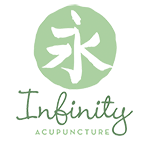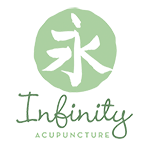Did you know stroke can happen to anyone at any age? You don’t have to be old and overweight with high blood pressure to have a stroke. You can be young or old or in-between. You can be black, white, brown, male or female, short or tall, strokes do not care what you look like on the outside, only what damage they can do to your insides.
Strokes can be life altering in many ways. Preventing immediate and long term damage is of the utmost importance. You need to know the information below, not only for yourself, but for anyone who has a stroke while in front of you.
- Know BE FAST- the signs of a stroke and when it's time to Call 911
B – Balance
The person may suddenly have trouble with balance or coordination.
E – Eyes
They could experience sudden blurred, double or total loss of vision. This can happen in one or both eyes.
F- Facial drooping
Specifically one side. Ask the person to smile to notice if the smile is uneven.
A- Arm weakness
Have the person raise both arms at the same time…does one arm drift downwards instead of raising up?
S- Speech difficulties
Slurred or abnormal speech, words don’t make sense
T- Time to call 911
Time is of the essence. You have very little time to get help to mitigate the damage that the stroke can cause
**Other signs may include one sided numbness, confusion, difficulty walking and or a severe headache with no known cause.
- Accept immediate medical attention provided. Time and western medical care is essential in these early moments of a stroke both to save a life as well as to decrease long term damage. Care within the first 60 minutes to 24 hours can be life changing.
- Seek therapeutic modalities - Once out of the danger zone and into the recovery zone there is much work to be done to help lingering speech difficulties and paralysis.
- Find a good physical therapist and be sure to do your at-home exercises.
- Find a speech therapist if aphasia is present.
- Find an acupuncturist! Acupuncture in the early stages is very helpful for rewiring and getting all those nerve connections back on track! It is also the perfect addition to other modalities because it will make everything more effective. In America, it is not known well enough to be recommended by neurologists ( which we consider a crime against humanity). Including acupuncture in early stroke recovery can be the difference between walking and not walking, having paralysis in one arm or not, having the ability to speak well or not. (Keep in mind that we’ve been able to help post stroke patients recover more fully even if their stroke was over 2 years prior, but think where they could have been if they’d come in earlier!)
- Make appropriate lifestyle changes- Incorporating new habits into a stroke recovery lifestyle can be vital. Eating healthy and getting great nutrition is key in having the right nourishment to get back on track. Taking high quality supplements can be an essential addition to this time period as well. This can be a great time to incorporate meditation, and/or simple modified qigong exercises.
- Seek out a counselor with experience with stroke patients- This is often highly overlooked. But the mental, emotional and spiritual toll a stroke can have on a person is not to be downplayed. Finding someone to talk to when able and ready can be very helpful in processing the trauma, coping with new ways of life and maintaining the motivation to keep working towards recovery.
If you or someone you know has suffered a stroke and has any lingering side effects, please reach out to us to see how we can help with acupuncture and additional therapies. JJ will get you scheduled for a consultation with Rashell to determine how we can help. 910.262.1122
Please watch our video with Richard below to see how we were able to help him walk again two years after he had his stroke.
We also recommend watching the Ted Talk, My Stroke of Insight by Jill Bolte Taylor. As a leading neuroscientist, she gives incredible insight into what was happening to her brain as she was experiencing a stroke.

